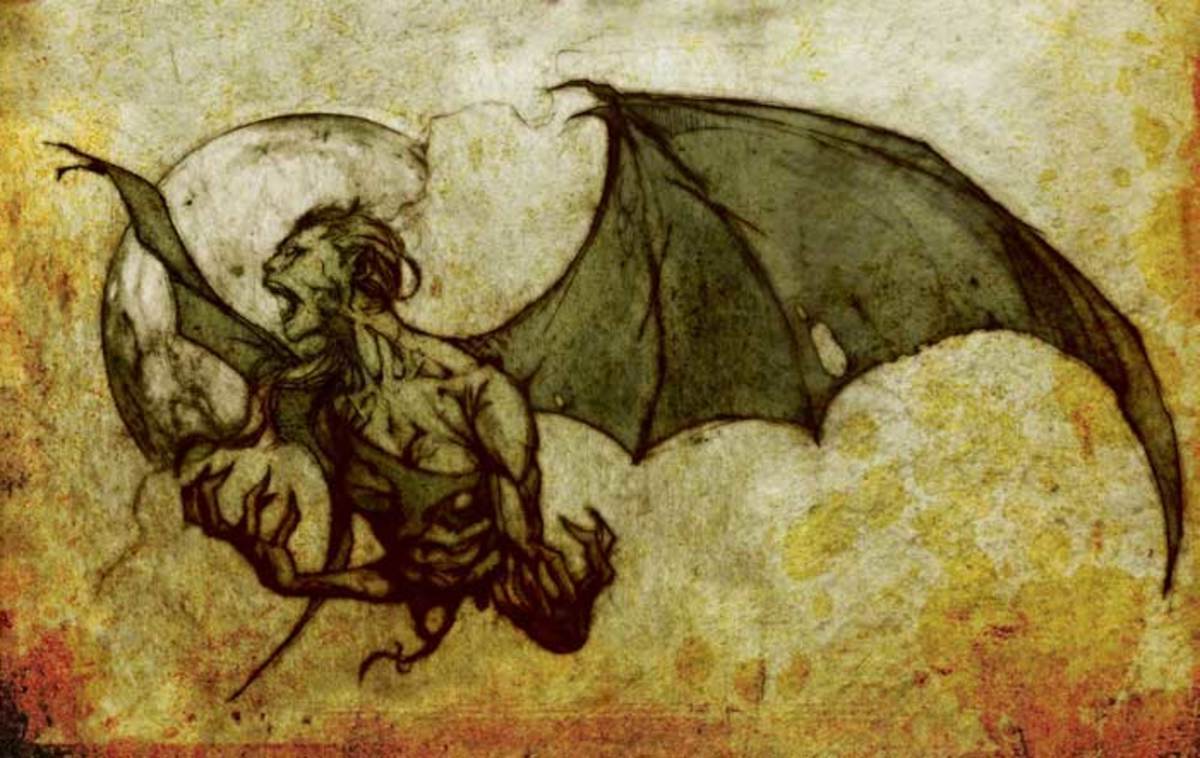
What is an Aswang? The Aswang is a shape-shifting creature from Filipino folklore, known for its terrifying and mysterious nature. Originating from the Philippines, stories about this entity date back to the 16th century. The term "Aswang" encompasses various evil beings like vampires, witches, and ghouls, each with unique traits depending on the region. These creatures are often associated with nocturnal activities, lurking in cemeteries and forests. Their shape-shifting abilities and sinister behaviors have made them a staple in Filipino culture, influencing literature, films, and even political narratives. Dive into these 37 intriguing facts to understand the Aswang's enduring legacy.
Key Takeaways:
- The aswang, a shape-shifting creature in Filipino folklore, has diverse regional variations and has influenced literature, media, and art, reflecting the rich heritage of Filipino culture.
- Scholars continue to study the aswang, and its stories remain relevant in modern times, reflecting contemporary fears and superstitions while preserving the rich heritage of Filipino folklore.
Origins and Variations of Aswang
The aswang is a shape-shifting creature deeply rooted in Filipino folklore. Its stories have evolved over centuries, influenced by various cultural and historical factors. Let's dive into the origins and different versions of this mythical being.
- The aswang is an integral part of Philippine folklore, with stories dating back to at least the 16th century. Spanish explorers first documented it, noting its fearsome reputation.
- The term "aswang" is an umbrella term for various shape-shifting evil creatures in Filipino folklore. These include vampires, ghouls, witches, viscera suckers, and transforming beings.
- Each region in the Philippines has its unique version of the aswang, reflecting local beliefs and traditions. This diversity adds richness to the folklore.
Behavior and Habitat
Aswangs are known for their nocturnal activities and eerie habitats. Their powers are said to be strongest at night, making them creatures of the dark.
- Aswangs are commonly associated with nocturnal activities, dwelling in locations such as cemeteries and woods.
- Their powers are said to be strongest at night, which is why they are often feared by people who venture out during this time.
Regional Legends and Myths
Different regions in the Philippines have their own unique stories and beliefs about the aswang. These regional variations add depth to the folklore.
- One of the most famous origins of the term "aswang" comes from the Bicol region. In this tradition, the aswang is associated with the evil God Asuang, who is the rival of the good God Gugurang.
- In Bicolano mythology, Gugurang is often portrayed as a fire-wielding God who can cause Mt. Mayon to erupt if displeased with humans.
- The aswang, jealous of Gugurang's power, attempted to steal fire but ended up causing the world to catch flames. Gugurang took the fire back and used thunder and lightning to strike the mountains, bringing upon all the evils and destruction that the people had never forgotten.
Literary and Media Appearances
The aswang has made its way into various forms of literature and media, showcasing its versatility as a mythical creature.
- The aswang has appeared in various literary works. In "Fantastic Crap Comics," an aswang character is featured in the fourth issue.
- The "Tikbalang, Aswang, Atbp. B1 Gang Series" follows four children on their supernatural investigations.
- "The Aswang Inquiry" compiles the supernatural researches of Frank Lynch, S.J., and Richard Arend, S.V.D.
- An aswang is the primary antagonist in the Supernatural spin-off novel "Supernatural: Fresh Meat."
- The aswang is also a central character in Jason Tanamor's novel "Vampires of Portlandia," where it is described terrorizing a remote village in the Philippines.
- In the Marvel Comics universe, a demonic character called "Aswang" is a member of the Diwatas, the Filipino gods.
Academic Studies and Contemporary Legends
Scholars have studied the aswang extensively, and its stories continue to evolve in modern times.
- Dr. Maximo Rosales wrote "The Aswang Complex in Philippine Folklore," which is a compilation of various aswang qualities in different regions of the Philippines.
- The aswang stories are continuously being rewritten to reflect contemporary urban legends, making it relevant in modern narratives.
- A much-in-depth study concerning the archival representations of aswang is necessary to understand the historization of this creature.
Notable Aswangs in Folklore
Certain aswangs have become particularly famous in Filipino folklore, each with their own unique stories.
- In Ilonggo folklore, the aswang is described as a human-like creature with a preference for feasting on human flesh. One of the most well-known aswangs is Tiniente Gimo, a kapitan from Dueñas, Iloilo.
- Maria Labo is another popular aswang in Ilonggo folklore. She is often portrayed as an OFW who was cursed by her patient, a vampire.
Haunted Locations and Supernatural Encounters
The aswang is often associated with haunted locations and eerie supernatural encounters, adding to its mystique.
- The Lizares Mansion in Iloilo City is known for its ghostly encounters. The mansion was once owned by sugar barons but was later occupied by Japanese soldiers during the war.
- Central Philippine University is said to be built on elven grounds and is rich in history involving wartime deaths and suffering. Many supernatural incidents occur in Roblee and Valentine halls.
Political and Historical Context
The aswang has also been used in political contexts, particularly during times of conflict.
- During the Hukbalahap Insurrection, the aswang was used to demonize communist insurgents.
- Declassified CIA documents from the 1950s detail the use of folklore, including the aswang, to understand and counter communist movements in the Philippines.
Cultural Significance and Symbolism
The aswang serves as a cultural symbol reflecting the fears and superstitions of Filipino communities.
- The aswang serves as a cultural symbol reflecting the fears and superstitions of Filipino communities.
- In some communities, the aswang is gendered as female, reflecting societal fears about women and their roles in society.
- Filipinos often encounter the aswang through supernatural experiences, such as hearing eerie sounds or seeing apparitions.
Colonial Influence and Evolution
The aswang has evolved over time due to historical events and cultural influences, making it a dynamic and complex creature.
- The concept of the aswang was introduced to Filipinos by Spanish colonizers who demonized animist shamans to persuade them to convert to Roman Catholicism.
- The aswang has been a part of Filipino folklore for centuries, evolving over time due to historical events and cultural influences.
Modern Adaptations and Cultural Impact
The aswang continues to captivate audiences in modern times, influencing various forms of media and art.
- The aswang has been adapted into various literary works, including novels and webcomics.
- Documentaries like "Aswang" review the cultural significance of the aswang, highlighting its role in Filipino folklore and its contemporary representations.
- The aswang has had a significant cultural impact on Filipino society, influencing art, literature, and even film.
Symbolism and Historical Documentation
The aswang's symbolism and historical documentation provide valuable insights into its role in Filipino culture.
- The aswang serves as a symbol of evil in Filipino folklore, reflecting societal fears about the unknown and the supernatural.
- Historical documents, such as those from the CIA, provide valuable insights into how the aswang was used to demonize communist insurgents during the Hukbalahap Insurrection.
Academic Analysis and Contemporary Relevance
Scholars continue to study the aswang, and its stories remain relevant in modern times.
- Academic studies, such as those by Dr. Maximo Rosales, offer comprehensive analyses of the aswang's role in Philippine folklore.
- The aswang remains relevant in contemporary narratives, reflecting modern fears and superstitions.
Folkloric Adaptations and Cultural Preservation
The aswang's stories and legends are passed down through generations, ensuring its cultural significance is not forgotten.
- Folkloric adaptations of the aswang can be seen in various forms of media, from horror movies to webcomics.
- The aswang serves as a cultural preservation tool, reflecting the rich heritage of Filipino folklore.
The Enduring Legacy of Aswang
The aswang is more than just a spooky tale; it's a reflection of Filipino culture, history, and societal fears. From its origins in the 16th century to its modern adaptations in literature and film, the aswang has evolved but remains a symbol of mystery and terror. Each region's unique take on the aswang adds richness to its lore, making it a versatile character in various narratives. Whether it's the Ilonggo stories of Tiniente Gimo or the Bicolano legend of Asuang, the aswang continues to captivate and frighten. Its role in supernatural investigations, academic studies, and even political propaganda highlights its cultural significance. The aswang's ability to adapt to contemporary contexts ensures its place in Filipino folklore for generations to come. This enduring legacy makes the aswang a fascinating subject for anyone interested in the supernatural and cultural history.
Frequently Asked Questions
Was this page helpful?
Our commitment to delivering trustworthy and engaging content is at the heart of what we do. Each fact on our site is contributed by real users like you, bringing a wealth of diverse insights and information. To ensure the highest standards of accuracy and reliability, our dedicated editors meticulously review each submission. This process guarantees that the facts we share are not only fascinating but also credible. Trust in our commitment to quality and authenticity as you explore and learn with us.


